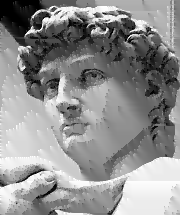Pngloss Save
Lossy compression of PNG images
pngloss
Lossily compress your PNG images with pngloss. The program reads the original PNG file and modifies the pixels to make them more compressible. The resulting PNGs are fully backwards compatible with existing PNG decoders. You can use the command line tool on your own machine, or compress images using the interactive website.
The compression technique relies on making small adjustments to pixel colors. It works best on true-color images with a wide variety of colors, like photographs or computer generated graphics with realistic lighting. It does not do a good job on paletted images or images with large areas of flat color.
Heritage
The lossy compression in pngloss is based on an algorithm in Michael Vinther's graphics editor, Image Analyzer.
The command line tool is based on Kornel Lesiński's PNG quantization tool, pngquant. Additionally, pngloss includes his work to port the lossy compression algorithm from Go to C as part of his PNG compression suite, ImageOptim.
William MacKay brought these pieces together and made improvements to the original compression algorithm, including:
- Diffuse color error using Sierra dithering.
- Instead of using a static, evenly spaced symbol table (e.g. 0, 20, 40...), pngloss chooses symbols which are more frequent in the original file.
- Instead of using only PNG's "average" filter, pngloss tries all five PNG filters for each row, keeping whichever has the best quality/size ratio.
- Explicitly tell libpng which filter to use for each row instead of hoping its adaptive filter selection algorithm will choose the correct one.
Installation
git clone https://github.com/foobaz/pngloss.git
cd pngloss
./configure
make
sudo make install
The only dependency is libpng.
Synopsis
pngloss [options] <file> [<file>...]
Options
-s, --strength
How much quality to sacrifice, from 0 to 85 (default 19). Strength 0 is
lossless and does not modify the pixel data, although it may convert
colorspace or strip PNG chunks. The maximum is 85 because the algorithm
needs at least three symbols to perform well and 256 / 3 ~= 85. One symbol
near zero is used for the majority of pixels, plus one positive and one
negative to insert when color error builds up enough that they are needed.
-b, --bleed
Color bleed divider, from 1 to 32767 (default 2). A divider of 1
propagates all of the error from quantization to neighboring pixels, which
improves visual quality but also increases filesize. The default of 2
propagates half (1/2) of the error, which is usually a good tradeoff.
-v, --verbose
Verbose - print additional information about compression.
-q, --quiet
Quiet - don't print information about compression (the default).
-f, --force
Force - overwrite existing output image.
--no-force
Don't overwrite existing output image - overrides an earlier "force" argument.
--ext
Specify filename extension. Defaults to "-loss.png". Use -f --ext .png to
overwrite original files in-place if the original has the extension ".png".
--skip-if-larger
Don't write compressed image if it's larger than the original.
-o, --output
Output filename. When this option is given only one input file is accepted.
--strip
Remove unnecessary chunks (metadata) from input file when writing output.
-V, --version
Print version number.
-h, --help
Display usage information.
Examples
| Original | -s 20 | -s 40 |
|---|---|---|
 |
 |
 |
| 18kB | 7kB (36%) | 5kB (23%) |
| Original | -s 20 | -s 40 |
|---|---|---|
 |
 |
 |
| 475kB | 65kB (13%) | 35kB (7%) |
| Original | -s 20 | -s 40 |
|---|---|---|
 |
 |
 |
| 234kB | 47kB (20%) | 30kB (13%) |
